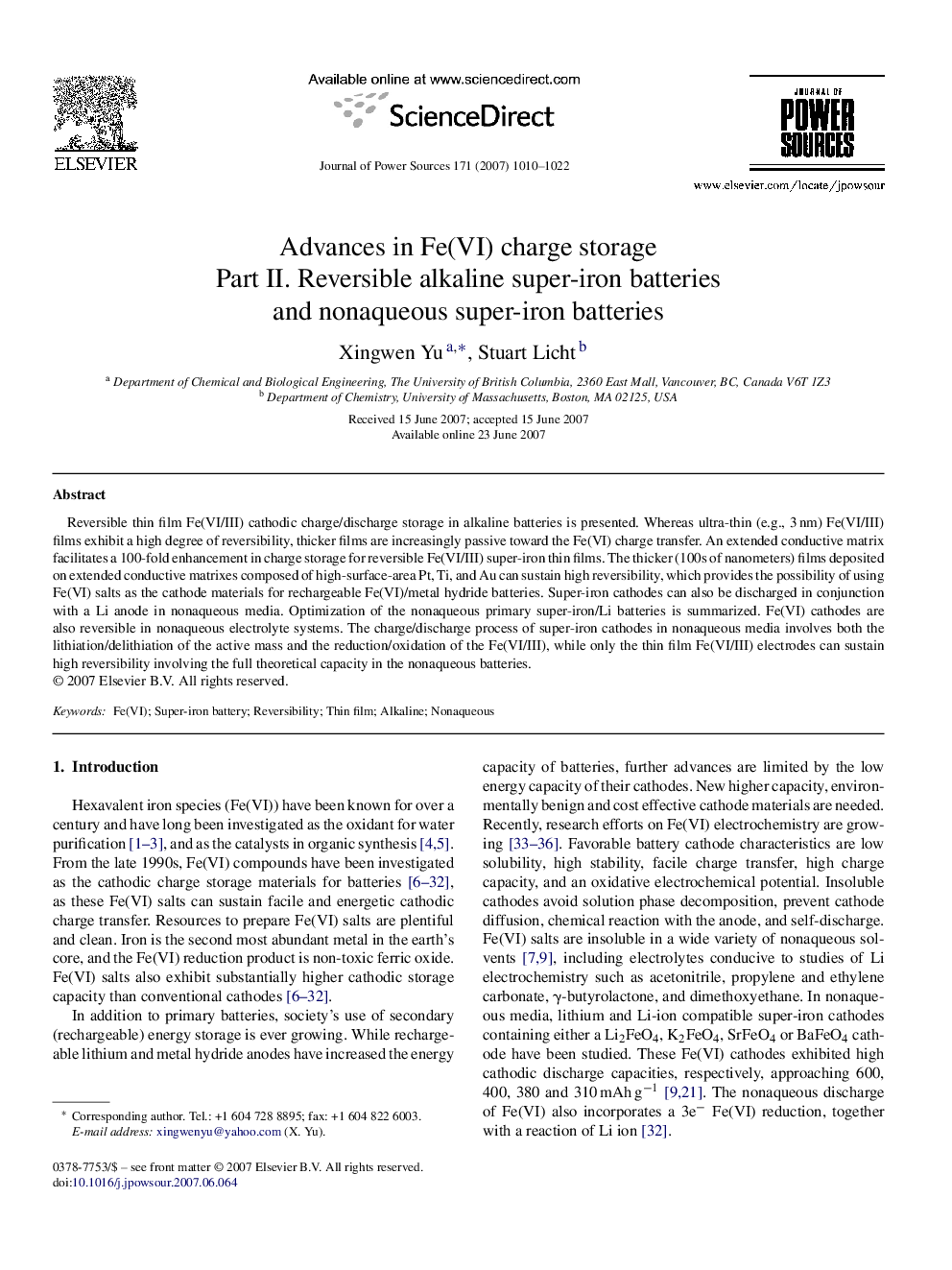| Article ID | Journal | Published Year | Pages | File Type |
|---|---|---|---|---|
| 1286425 | Journal of Power Sources | 2007 | 13 Pages |
Reversible thin film Fe(VI/III) cathodic charge/discharge storage in alkaline batteries is presented. Whereas ultra-thin (e.g., 3 nm) Fe(VI/III) films exhibit a high degree of reversibility, thicker films are increasingly passive toward the Fe(VI) charge transfer. An extended conductive matrix facilitates a 100-fold enhancement in charge storage for reversible Fe(VI/III) super-iron thin films. The thicker (100s of nanometers) films deposited on extended conductive matrixes composed of high-surface-area Pt, Ti, and Au can sustain high reversibility, which provides the possibility of using Fe(VI) salts as the cathode materials for rechargeable Fe(VI)/metal hydride batteries. Super-iron cathodes can also be discharged in conjunction with a Li anode in nonaqueous media. Optimization of the nonaqueous primary super-iron/Li batteries is summarized. Fe(VI) cathodes are also reversible in nonaqueous electrolyte systems. The charge/discharge process of super-iron cathodes in nonaqueous media involves both the lithiation/delithiation of the active mass and the reduction/oxidation of the Fe(VI/III), while only the thin film Fe(VI/III) electrodes can sustain high reversibility involving the full theoretical capacity in the nonaqueous batteries.
